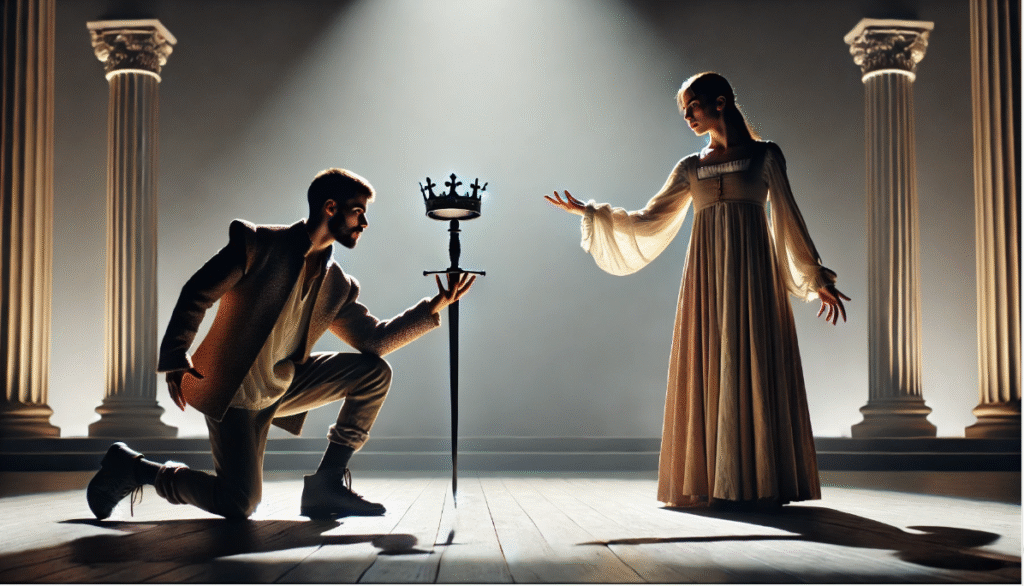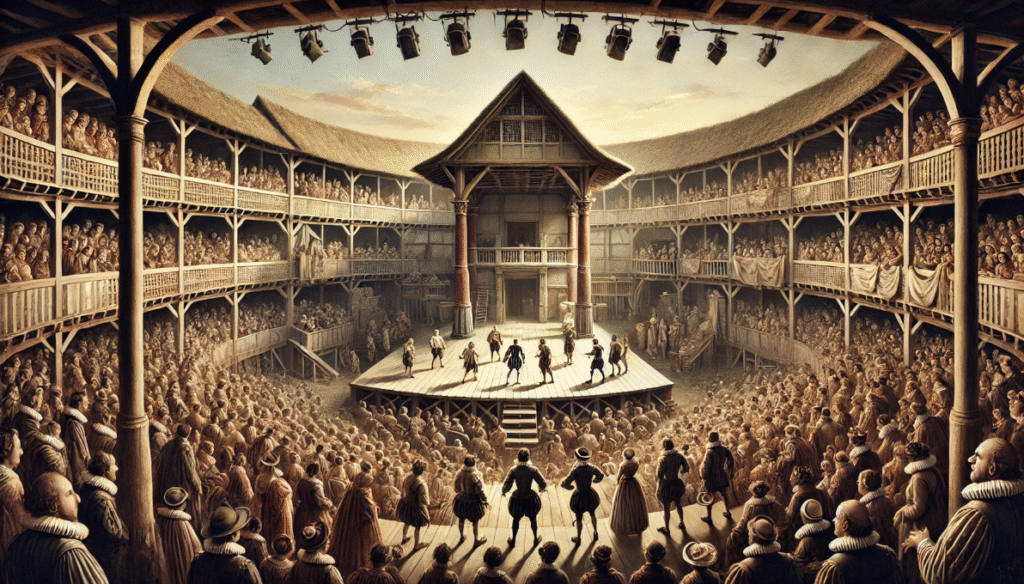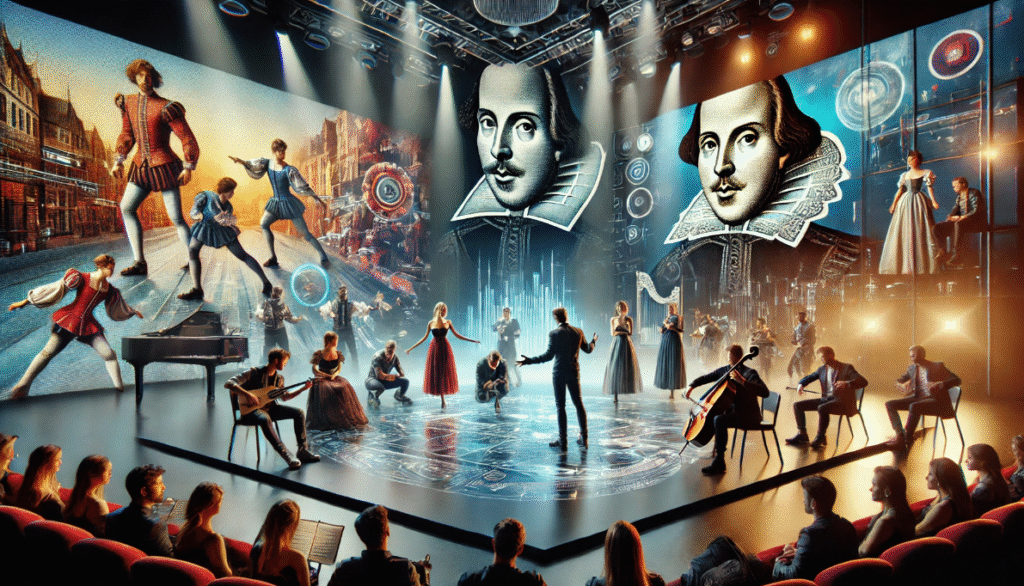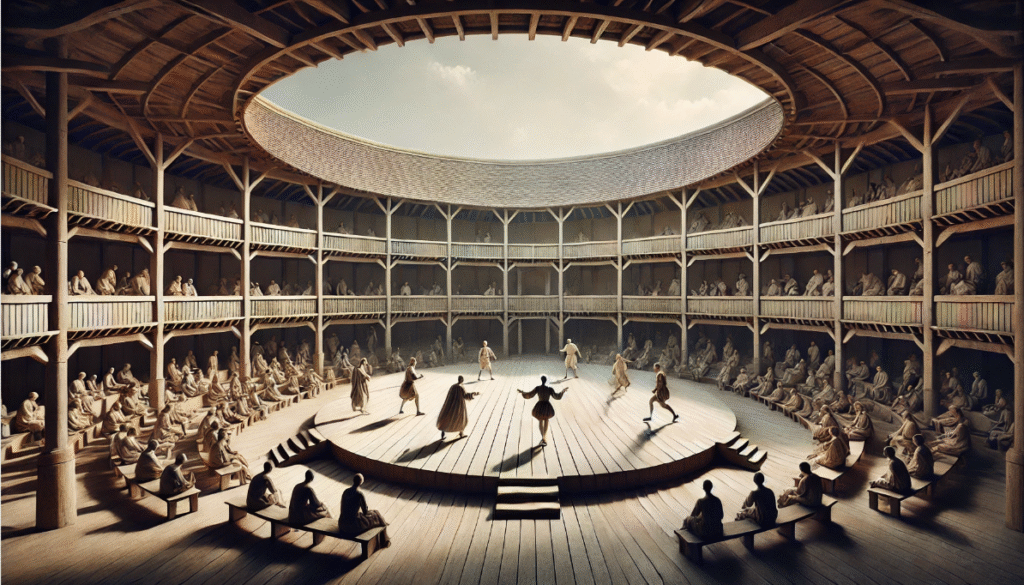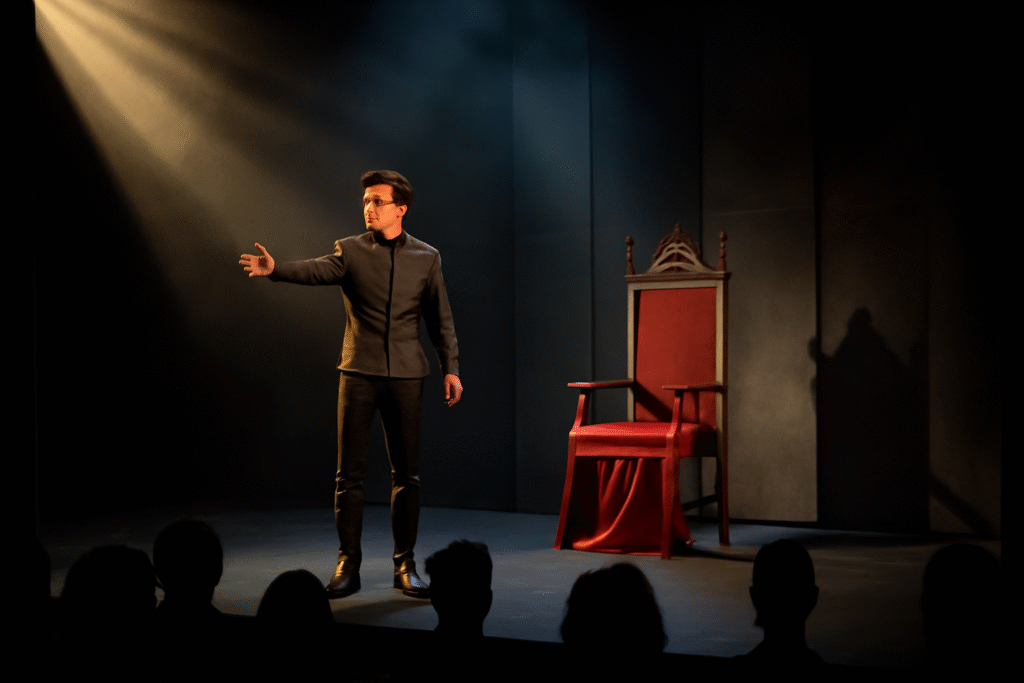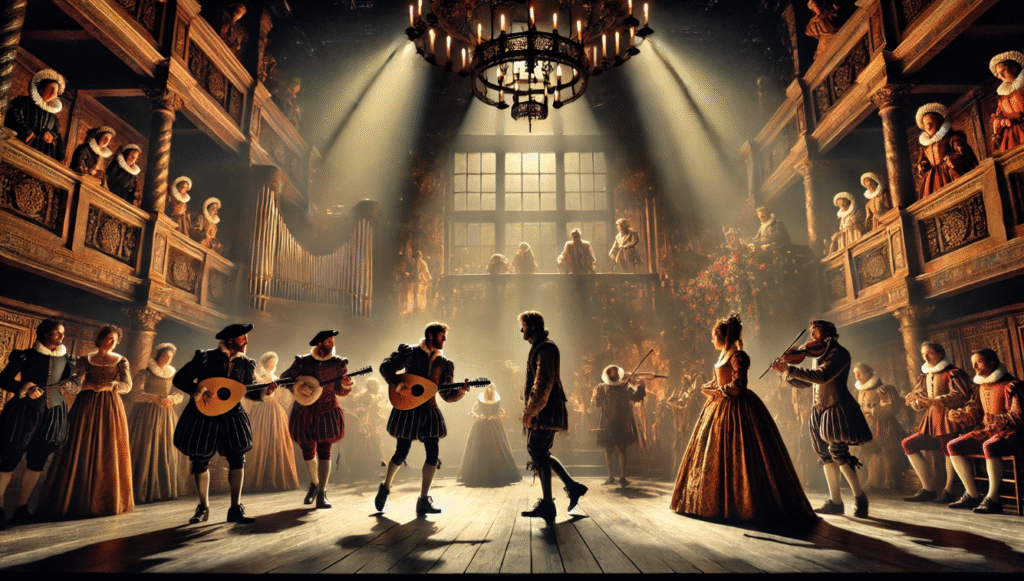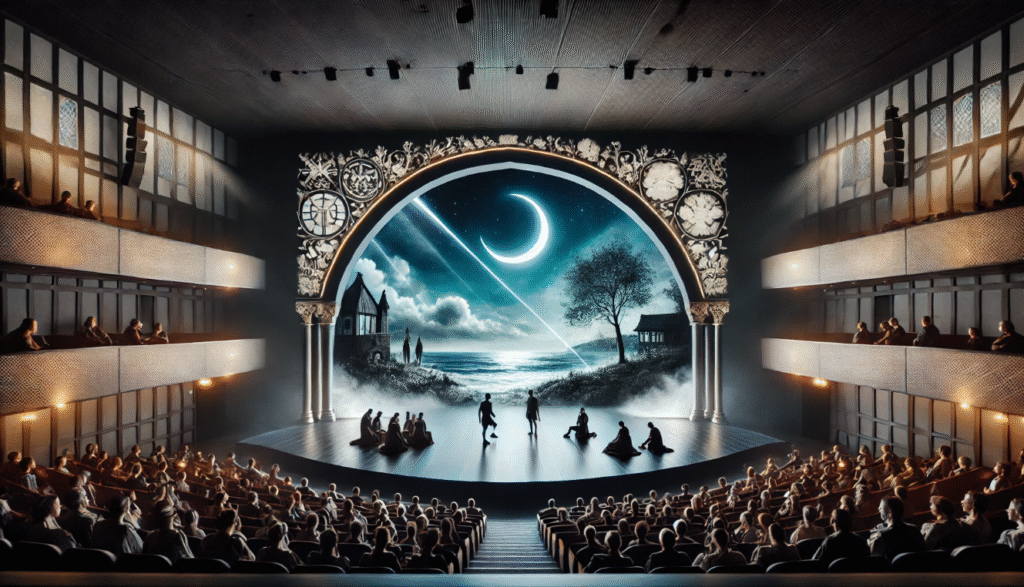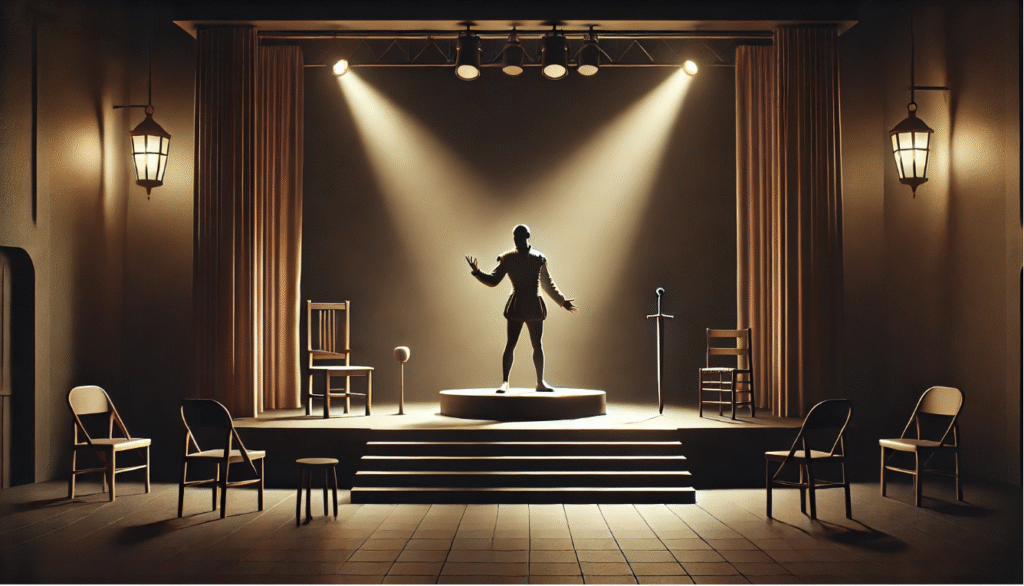Picture a dimly lit stage where a single wooden chair becomes a king’s throne, a trapdoor conjures a ghostly apparition, and vivid dialogue paints an entire forest in the audience’s mind. This is the magic of Shakespearean stagecraft, a revolutionary approach that continues to shape modern set design. The impact of Shakespearean stagecraft on set design is profound, offering timeless lessons in creativity, minimalism, and audience engagement. For theater enthusiasts, designers, and students, understanding this influence unlocks new ways to craft immersive, cost-effective, and evocative productions. Drawing on historical insights from the Folger Shakespeare Library and practical experience in theater design, this article explores how Shakespeare’s techniques inspire today’s stages, solving real-world challenges for modern productions while honoring a centuries-old legacy.
Understanding Shakespearean Stagecraft
The Elizabethan Theater Context
In the late 16th century, Elizabethan theaters like the Globe were architectural marvels of simplicity. These open-air venues, often polygonal with a thrust stage jutting into the audience, relied on minimal infrastructure. Unlike today’s theaters with elaborate lighting and hydraulic sets, the Globe had no curtains, limited props, and no artificial lighting. This bare-bones setup forced playwrights like Shakespeare to rely on language, actors, and sparse physical elements to create entire worlds. The audience, standing in the pit or seated in galleries, was an active participant, their imagination filling in the gaps. According to Dr. Farah Karim-Cooper of the Shakespeare’s Globe Research Team, this environment “demanded a collaborative storytelling process between actors and audience,” a dynamic that remains a cornerstone of theater today.
Core Elements of Shakespearean Stagecraft
Shakespearean stagecraft was defined by ingenuity. Key elements included:
- Minimal Props: A single prop, like a sword or a crown, could symbolize complex themes. For example, in Macbeth, a bloody dagger becomes a haunting emblem of guilt.
- Descriptive Language: Shakespeare’s vivid dialogue—think of the storm in King Lear—painted scenes without physical sets.
- Symbolic Space: The stage’s architecture was used creatively. The upper balcony served as Juliet’s window in Romeo and Juliet, while trapdoors evoked graves or supernatural realms in Hamlet.
- Audience Interaction: Actors often addressed the audience directly, breaking the fourth wall to enhance immersion.
These techniques allowed Shakespeare to create versatile, imagination-driven performances that modern designers still emulate.
The Impact of Shakespearean Stagecraft on Set Design Principles
Minimalism as a Design Philosophy
Shakespeare’s minimalist approach remains a powerful influence on modern set design. By using few props and relying on audience imagination, his plays demonstrated that less can be more. Today, minimalist set designs are celebrated for their ability to focus on story and emotion rather than spectacle. For instance, the 2016 Royal Shakespeare Company (RSC) production of Macbeth used a stark, black stage with minimal props—a nod to Shakespearean simplicity—to emphasize the psychological turmoil of the characters.
Practical Tip: Theater designers on a budget can adopt this approach by selecting one or two evocative props (e.g., a weathered book for a library scene) and using lighting to enhance mood. This not only saves costs but also encourages creative storytelling, aligning with Shakespeare’s vision.
Audience Imagination and Engagement
Shakespeare’s reliance on descriptive language to set scenes taught designers the power of audience imagination. In A Midsummer Night’s Dream, lines like “I know a bank where the wild thyme blows” conjure a forest without physical trees. Modern productions, especially immersive theater, build on this. Punch drunk’s Sleep No More, an avant-garde retelling of Macbeth, uses minimal sets and atmospheric sound to immerse audiences in a dreamlike world, echoing Shakespeare’s technique of letting spectators co-create the narrative.
Case Study: Sleep No More transforms a warehouse into a multi-room experience where audiences wander freely, piecing together the story. This mirrors how Elizabethan audiences visualized settings through dialogue, proving Shakespeare’s methods remain relevant.
Flexibility in Stage Use
The Globe’s multi-purpose stage, with features like trapdoors and balconies, inspired modern modular set designs. These allow quick scene changes without bulky sets. The RSC’s 2018 Hamlet used a rotating platform and minimal props to shift from a castle to a graveyard seamlessly, reflecting Shakespeare’s fluid use of space.
Example: Modern theaters like the Guthrie in Minneapolis employ flexible stages with movable panels, allowing directors to recreate the Globe’s versatility. This adaptability is crucial for fast-paced productions with multiple settings.
Shakespearean Influence on Modern Set Design Trends
Symbolism and Metaphor in Set Design
Shakespeare’s use of symbolic props continues to inspire designers to imbue objects with deeper meaning. In Hamlet, Yorick’s skull is not just a prop but a meditation on mortality. Modern designers apply this principle to create sets that resonate emotionally. For example, a 2020 production of King Lear at the Old Vic used a single, weathered chair to symbolize Lear’s crumbling authority, a direct descendant of Shakespeare’s symbolic minimalism.
Example: In designing Othello, a single white cloth, stained progressively throughout the performance, can represent jealousy’s destructive spread—a technique rooted in Shakespearean symbolism.
Integration of Technology
While Shakespeare relied on language and props, modern designers enhance his techniques with technology. Lighting, projections, and soundscapes amplify the atmosphere he created through words. The National Theatre’s 2019 A Midsummer Night’s Dream used digital projections to create a magical forest, blending Shakespeare’s imagination-driven approach with cutting-edge visuals.
Expert Insight: Set designer Es Devlin notes, “Shakespeare’s stagecraft teaches us that technology should serve the story, not overshadow it.” Her work on The Lehman Trilogy used a rotating glass cube with projections to evoke multiple settings, maintaining Shakespeare’s focus on narrative clarity.
Environmental and Immersive Design
The Globe’s open-air, audience-inclusive design laid the groundwork for modern environmental theater, where the entire space becomes part of the performance. Productions like the Globe’s 2021 Twelfth Night invited audiences to interact with performers, much like Elizabethan theatergoers did. Immersive companies like Third Rail Projects draw on this, creating sets that blur the line between performer and spectator.
Practical Tip: For small theaters, create immersive experiences by using unconventional spaces—think rooftops or warehouses—and minimal props to evoke Shakespearean flexibility. Budget-friendly materials like fabric or recycled wood can transform a space while keeping costs low.
Practical Applications for Theater Designers
Adapting Shakespearean Techniques for Small Theaters
Small theaters often face budget constraints, making Shakespearean minimalism a practical solution. A community theater’s 2022 Romeo and Juliet used a single arched frame, repositioned to represent a balcony, a tomb, or a city gate, proving that versatile props can create dynamic productions.
Step-by-Step Guide:
- Choose a Central Prop: Select one multi-purpose item (e.g., a wooden ladder for A Midsummer Night’s Dream to represent trees or a palace).
- Leverage Lighting: Use colored gels or spotlights to shift moods without physical sets.
- Incorporate Audience Space: Design sets that integrate audience areas, mimicking the Globe’s thrust stage.
- Simplify Scene Changes: Use movable panels or curtains for quick transitions.
Balancing Historical Accuracy with Modern Audiences
Recreating Shakespearean stagecraft can be challenging when audiences expect modern spectacle. Designers must balance historical authenticity with accessibility. The 2017 Globe production of Antony and Cleopatra used period-inspired costumes but modern lighting to bridge the gap.
Expert Insight: Director Emma Rice emphasizes, “Shakespeare’s stagecraft is timeless because it prioritizes human connection. Modernize the visuals, but keep the heart.” Designers can use abstract sets or subtle tech enhancements to maintain Shakespeare’s spirit while engaging today’s viewers.
Challenges and Criticisms of Shakespearean-Inspired Set Design
Limitations of Minimalism
While Shakespearean minimalism offers creative freedom, it isn’t without challenges in modern theater. One primary limitation is the risk of alienating audiences accustomed to high-production values and visual spectacle. In an era dominated by CGI-heavy films and elaborate Broadway shows, a sparse set can sometimes feel underwhelming or incomplete. For instance, critics of minimalist productions often argue that they place too much burden on the actors and audience, potentially leading to disengagement if the performance doesn’t captivate.
As noted in discussions on contemporary theater issues, audiences may feel “cheated” by minimalistic sets, expecting more for their ticket price, such as detailed environments that immerse them fully.
Another challenge is practical: minimalism requires precise execution. Poor lighting or uninspired prop choices can make a set feel barren rather than evocative. In period pieces like Shakespeare’s plays, stripping away elements might dilute historical context, making it harder for viewers to connect with the era. Designers must navigate this by ensuring that every element on stage serves a purpose, drawing from Shakespeare’s symbolic approach to avoid emptiness.
Practical Tip: To mitigate these limitations, incorporate subtle multimedia elements, like projected shadows or ambient sounds, to add layers without compromising minimalism. This hybrid approach, inspired by Shakespeare but adapted for today, can satisfy modern expectations while staying true to the original stagecraft.
Accessibility for New Audiences
Shakespearean-inspired set designs, with their emphasis on imagination, can pose accessibility issues for diverse or novice audiences. Not everyone arrives with the same cultural literacy; for those unfamiliar with Shakespeare’s language or Elizabethan conventions, a minimalist set might confuse rather than clarify. This is particularly relevant for younger viewers or international audiences who may rely on visual cues to follow complex plots.
Inclusivity is another concern. Minimalist designs might overlook accommodations for those with visual impairments, where descriptive audio or enhanced visuals are needed. Modern theaters are addressing this by integrating surtitles or haptic feedback, but balancing Shakespearean purity with accessibility remains a tightrope walk.
Practical Tip: Enhance accessibility by using universal symbols in props and incorporating diverse casting that reflects contemporary society. For example, in a 2024 Folger Theatre production of Romeo and Juliet, directed with modern twists, the set included subtle visual aids like color-coded lighting to denote factions, making the story more approachable for all.
The Future of Shakespearean Stagecraft in Set Design
As theater evolves, Shakespearean stagecraft will continue to inspire innovations, particularly in immersive and technology-driven designs. Emerging trends point toward virtual reality (VR) and augmented reality (AR) integrations, where audiences can “enter” Shakespearean worlds digitally. Imagine donning VR headsets for The Tempest, experiencing Prospero’s island in 360 degrees, building on Shakespeare’s imagination-centric approach but amplified by tech.
Sustainability is another key trend. With climate concerns rising, minimalist sets reduce waste, aligning with Shakespeare’s resource-efficient methods. Future designs may use eco-friendly materials and modular components that can be reused across productions, as seen in the Royal Shakespeare Company‘s push for green theater practices in their 2025-26 season.
Immersive theater, already growing, will likely expand. Productions like the Hudson Valley Shakespeare’s 2025 Julius Caesar emphasize site-specific staging, echoing the Globe’s environmental integration
Expert Prediction: Theater technologist Dr. Sarah Bay-Cheng predicts that by 2030, Shakespearean principles will fuse with AI and AR to create “adaptive stages” where sets evolve based on performer cues, maintaining flexibility while pushing boundaries
The impact of Shakespearean stagecraft on set design is a testament to its enduring genius, from minimalist philosophies that spark imagination to flexible spaces that adapt to any narrative. By exploring historical contexts, modern applications, and future trends, we’ve seen how these techniques solve real challenges for designers—budget constraints, audience engagement, and innovation—while enriching the theatrical experience. Whether you’re a seasoned director or an aspiring student, embracing Shakespeare’s legacy can elevate your work.
FAQs
What is Shakespearean stagecraft?
Shakespearean stagecraft refers to the innovative techniques used in Elizabethan theaters, including minimal props, symbolic use of space, and reliance on actors’ performances and dialogue to create scenes. Rooted in venues like the Globe Theatre, it emphasized audience imagination over elaborate sets, a method that influenced centuries of theater design.
How does Shakespearean stagecraft influence modern theater?
It promotes minimalism, symbolism, and flexibility, seen in contemporary productions that use sparse sets to focus on story and emotion. Examples include immersive experiences like Sleep No More and tech-enhanced shows at the National Theatre, where Shakespeare’s principles enhance engagement and creativity.
Can small theaters use Shakespearean techniques effectively?
Absolutely. By adopting versatile props and modular designs, small theaters can create dynamic productions on a budget. Follow steps like selecting multi-purpose items and leveraging lighting to mimic the Globe’s efficiency, as demonstrated in community adaptations of Romeo and Juliet.
What are some examples of modern productions inspired by Shakespeare?
Recent highlights include the Folger Theatre’s 2024-25 Romeo and Juliet with award-winning direction, Hartford Stage’s lush Romeo and Juliet and Shakespeare’s Globe Summer 2025 lineup focusing on transformation through timeless tales.
How can technology enhance Shakespearean-inspired set designs?
Technology like projections, lighting, and AR builds on Shakespeare’s imagination by adding visual layers. For instance, digital forests in A Midsummer Night’s Dream or AI-adaptive sets in future productions maintain narrative focus while captivating modern audiences.


